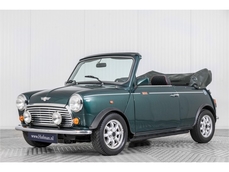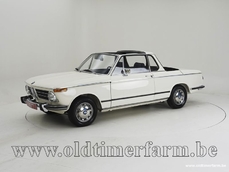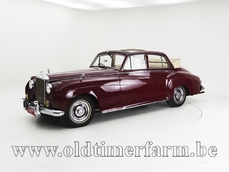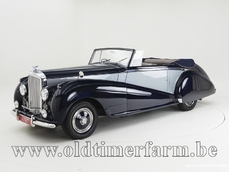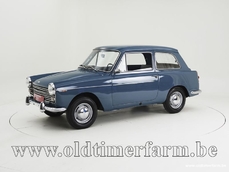Mini Cooper 1998
Allgemeine Beschreibung :
Lowered price from €14.950 - €12.500 Issigonis' friend John Cooper, owner of the Cooper Car Company and designer and builder of Formula One and rally cars, saw the potential of the Mini for competition. Issigonis was initially reluctant to see the Mini in the role of a performance car, but after John Cooper appealed to BMC management, the two men collaborated to create the Mini Cooper, a nimble, economical and inexpensive car. The Austin Mini Cooper and Morris Mini Cooper debuted in 1961. The original 848 cc engine from the Morris Mini-Minor was given a longer stroke to increase capacity to 997 cc, boosting power from 34 bhp to 55 bhp (25 to 41 kW). The car featured a racing-tuned engine, twin SU carburettors, a closer-ratio gearbox and front disc brakes, uncommon at the time in a small car. One thousand units of this version were commissioned by management, intended for and designed to meet the homologation rules of Group 2 rally racing. The 997 cc engine was replaced by a shorter stroke 998 cc unit in 1964. A more powerful Mini Cooper, dubbed the "S", was developed in tandem and released in 1963. Featuring a 1071 cc engine with a 70.61 mm bore and nitrided steel crankshaft and strengthened bottom end to allow further tuning; and larger servo-assisted disc brakes, 4,030 Cooper S cars were produced and sold until the model was updated in August 1964. Cooper also produced two S models specifically for circuit racing in the under 1000cc and under 1300cc classes respectively, rated at 970 cc and a 1275 cc, both with the 70.61mm bore and both of which were also offered to the public. The smaller-engine model was not well received, and only 963 had been built when the model was discontinued in 1965. The 1275 cc Cooper S models continued in production until 1971. Sales of the Mini Cooper were as follows: 64,000 Mark I Coopers with 997 cc or 998 cc engines; 19,000 Mark I Cooper S with 970 cc, 1071 cc or 1275 cc engines; 16,000 Mark II Coopers with 998 cc engines; 6,300 Mark II Cooper S with 1275 cc engines. There were no Mark III Coopers and just 1,570 Mark III Cooper S's. The Mini Cooper S earned acclaim with Monte Carlo Rally victories in 1964, 1965 and 1967.[29] Minis were initially placed first, second and third in the 1966 rally as well, but were disqualified after a controversial decision by the French judges. The disqualification related to the use of a variable resistance headlamp dimming circuit in place of a dual-filament lamp. It should be noted that the Citroën DS that was eventually awarded first place had illegal white headlamps but escaped disqualification. The driver of the Citroën, Pauli Toivonen, was reluctant to accept the trophy and vowed that he would never race for Citroën again. BMC probably received more publicity from the disqualification than they would have gained from a victory. In 1971, the Mini Cooper design was licensed in Italy by Innocenti and in 1973 to Spain by Authi (Automoviles de Turismo Hispano-Ingleses), which began to produce the Innocenti Mini Cooper 1300 and the Authi Mini Cooper 1300, respectively. The Cooper name disappeared from the UK Mini range at this time, as British Leyland (as it was by then) supposedly did not want to pay John Cooper royalties for the use of his name, so it was not seen again on Minis for nearly 20 years! A new Mini Cooper named the RSP (Rover Special Products) was briefly relaunched in 1990-1991, with slightly lower performance than the 1960s Cooper. It proved so popular that the new Cooper-marked Mini went into full production in late 1991. From 1992, Coopers were fitted with a fuel-injected version of the 1275 cc engine, and in 1997 a multi-point fuel injected engine was introduced, along with a front-mounted radiator and various safety improvements. Specifications Bodywork Length : cm (in): 305 (120.3) Width : cm (in): 144 (56.7) Height : cm (in): 134 (52.8) Wheelbase : cm (in) : 203.5 (80.1) Weight: kg (lb) : 690 (1521) Mechanics. Displacement : straight 4 1275 cc (78 ci), front mounted Valve gear : 8 Fuel system : sequential point fuel injection Gearbox : 4 speed manual Drive wheels : front wheel drive Maximum power : 63 bhp at 5550 rpm Maximum torque : 95 Nm at 3000 rpm Maximum speed : 160 km/h (100 mph)
http://www.oldtimerfarm.be/en/collection-cars-for-sale/4813/mini-cooper-13-mpi-98.php
1998 Mini Cooper is listed verkauft on ClassicDigest in Aalter by Oldtimerfarm Dealer for €12500.
Fakten der Auto
Karosserietyp : Auto Marke : Mini Modell : Cooper Hubraum : 0.0 Modelljahr : 1998 Karosstyp : Sedan Farbe : Blau Lage : Aalter
Verkauft
Angaben Zum Verkäufer
Verkauft
People who viewed this Mini Cooper also viewed similar Mini listed at ClassicDigest
Other cars listed for sale by this dealer
über Mini
Der Mini ist zweifellos ein ikonisches Auto, das die Automobilindustrie revolutioniert hat und den Standard für Kompaktwagen gesetzt hat. Hier ist eine kurze Geschichte des Mini, seiner Entwicklung und einiger wichtiger Versionen des klassischen Mini:1. Ursprünge und Entwicklung:
Gründer und Designer: Der Mini wurde von Sir Alec Issigonis, einem britisch-griechischen Automobilingenieur, entworfen.
Einführung: Der Mini wurde 1959 offiziell von der British Motor Corporation (BMC) vorgestellt.
Innovatives Design: Issigonis' Design umfasste einen Quermotor, Frontantrieb und ein kompaktes Layout, das den Innenraum maximieren sollte.
2. Klassische Mini-Modelle:
Mark I (1959–1967):
Mini Cooper (1961): Die leistungsorientierte Cooper-Version, in Zusammenarbeit mit dem Rennlegenden John Cooper entwickelt, wurde eingeführt.
Mark II (1967–1970):
Geringfügige Designänderungen, einschließlich eines neu gestalteten Kühlergrills.
Mark III (1969–2000):
Einführung der Varianten Clubman und Clubman Estate.
Weitere Designaktualisierungen, einschließlich eines abgerundeteren vorderen Kühlergrills.
3. Mini Cooper S:
Leistungsvariante: Der Mini Cooper S, insbesondere die Version Mk I, wurde durch seinen Erfolg bei Rallye-Rennen bekannt und gewann mehrmals die Rallye Monte Carlo.
4. Mini Moke:
Nutzfahrzeug: Der Mini Moke war ein Nutzfahrzeug auf Basis des Mini-Plattformkonzepts mit offenem Verdeck. Er wurde in verschiedenen warmen Regionen populär.
5. Mini Countryman:
Verlängerte Version: Der Mini Countryman wurde als längere und praktischere Version des klassischen Mini eingeführt. Er verfügte über eine rückwärts öffnende Tür für einen leichteren Zugang zu den Rücksitzen.
6. Ende der Produktion:
Spätere Jahre: Die Produktion des klassischen Mini lief bis zum Jahr 2000 weiter.
Abschlusseditionen: Der letzte klassische Mini verließ die Produktionslinie am 4. Oktober 2000 und markierte das Ende einer Ära.
7. BMW-Ära und neuer MINI:
BMW-Übernahme: BMW erwarb die Rechte an der Marke Mini und führte 2001 den neuen MINI ein.
Moderne Interpretation: Der neue MINI behielt einige Designelemente des klassischen Mini bei, verfügte jedoch über moderne Technologie und Sicherheitsstandards.
8. Erbe und Einfluss:
Kulturelles Symbol: Der klassische Mini wurde zu einem kulturellen Symbol, das britisches Design und Effizienz verkörpert.
Einfluss auf Kompaktwagen: Das Layout und die Designprinzipien des Mini beeinflussten die Entwicklung von Kompaktwagen für Jahrzehnte.
Die Auswirkungen des Mini auf die Automobilindustrie gehen über seine kompakte Größe hinaus. Er repräsentiert eine Designphilosophie, die auf Effizienz, Raumnutzung und Fahrspaß setzt. Die anhaltende Beliebtheit des klassischen Mini ist ein Beweis für sein zeitloses Design und innovative Ingenieurskunst.






